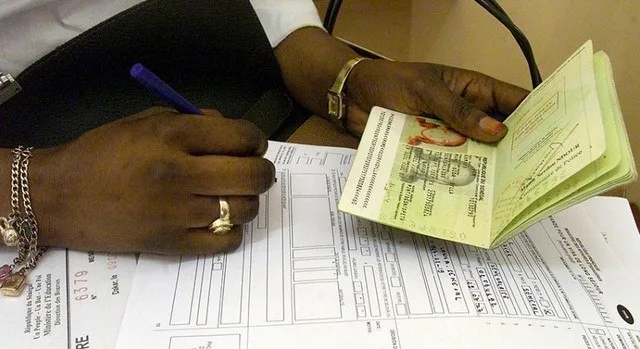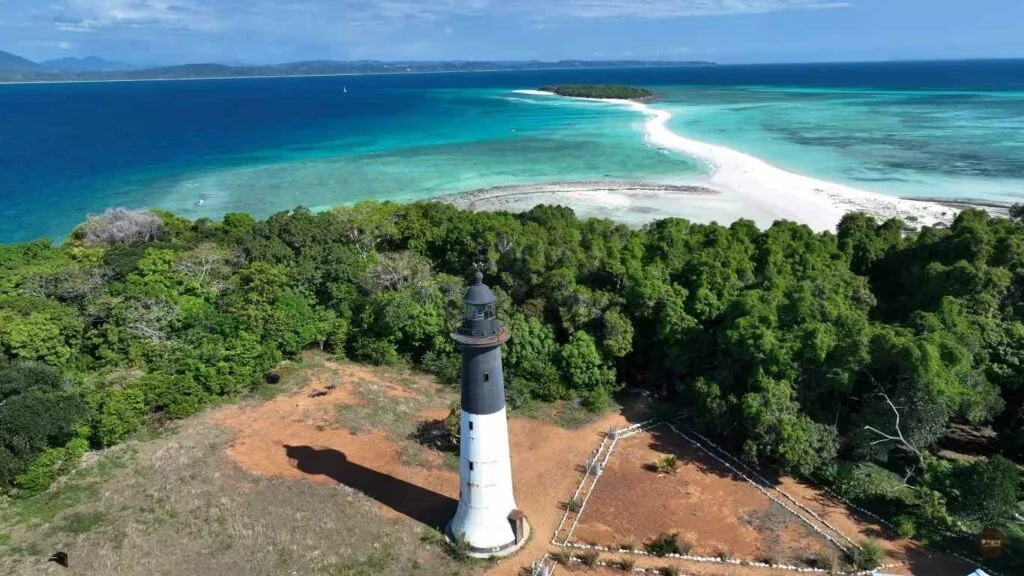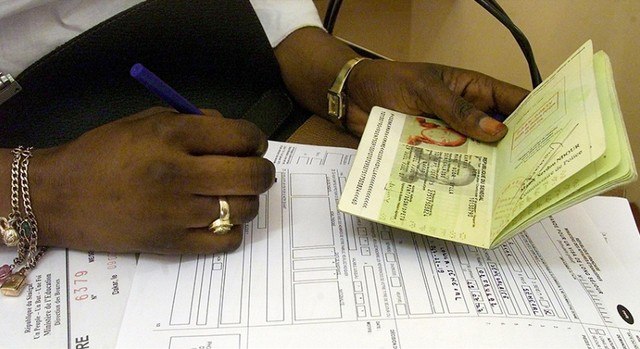Getting a Madagascar visa was an essential part of planning my trip to this unique island. As a traveler who enjoys exploring new destinations, I’ve gone through the visa process and have some practical tips to share.
From understanding different visa requirements to choosing the right type for your stay, this guide will help you navigate the process smoothly. Whether you need a Madagascar Visa on Arrival or an e-visa for a longer visit, I’ll provide simple, straightforward advice to ensure your preparations are hassle-free. Let’s dive into what you need to know to secure your Madagascar visa and start your adventure!
Entry Requirements for A Madagascar Visa
Understanding Visa on Arrival (VOA)
As someone who has traveled quite a bit, getting a Madagascar visa was surprisingly straightforward thanks to the Visa on Arrival (VOA). Here’s the scoop: Most travelers from around the world can get this visa right when they land in Madagascar, provided they meet certain criteria.
However, it’s important to note that travelers from Palestine and Burundi might need to arrange their madagascar visa beforehand, so it’s best to check this before flying.
Upon arrival, you’ll need to pay an administrative fee. For those of us staying for less than 15 days, Madagascar is pretty welcoming—no visa is needed.
But remember, you still have to pay around 10 Euros (47698.86 Malagasy Ariary) at the airport for border control formalities, even if you don’t need a visa. It’s a small fee that helps streamline the entry process, ensuring everything runs smoothly.
Key Documents Needed For A Madagascar Visa
Before you board your plane, make sure you have all the necessary documents to present at the VOA desk in Madagascar. Here’s what you’ll need:
Valid Passport
Your passport must be valid for at least six months beyond your date of entry into Madagascar. They won’t let you in if it’s expiring soon!
Onward/Return Ticket
This is crucial. You need to show that you have plans to leave Madagascar. It could be a return ticket back home or an onward ticket to another destination.
Proof of Funds
You’ll also need to prove that you have enough money to cover your stay. This is pretty standard for many countries as they want to ensure you can support yourself during your visit.
Having these documents ready when you land will make the entry process much smoother. Trust me, there’s nothing like a quick pass through immigration to start your adventure on the right foot!
Madagascar Visas for Short and Long Stays

Short Stays (Under 60 Days)
If you plan to visit Madagascar for less than 60 days, getting a Visa on Arrival (VOA) is quite convenient. Here’s how it works:
Arrival at the Airport
Once you disembark your flight, follow the signs to the immigration area where the VOA counters are located.
Fill Out the Form
You’ll be given an entry form containing the usual information, such as your details and the purpose of your visit.
Documents Submission
Please hand over your passport, return or onward ticket, proof of sufficient funds, and the completed form.
Payment
Pay the VOA fee. It’s relatively affordable and can be paid in Euros. Have cash ready; it just makes things faster.
Receive Your Madagascar Visa
The officer will process your documents, and if all is in order, they’ll stick the visa right into your passport.
You also have the choice between a single or multiple entry visa. If you plan to hop to nearby countries like the Mauritius Reunion and then return to Madagascar, the multiple entry visa is the way to go. It’s slightly more expensive but gives you flexibility.
Long Stays (Over 60 Days)
For those looking to stay in Madagascar for more than 60 days, whether for work, study or maybe an extended vacation, you’ll need to apply for an e-Visa. Here’s how to tackle the e-visa process:

Visit the Official e-visa Website
Start by checking out Madagascar’s official e-Visa portal. It’s user-friendly and has all the information you need.
Choose Your Visa Type
Select the type of Madagascar visa you need based on your visit’s purpose—tourist, business, or study. Each category has slightly different document requirements and fees.
Fill Out the Application Form
Complete the online application form by entering your personal information and details about your planned stay.
Upload Documents
You’ll need to upload digital copies of your passport, a passport-sized photo, and other documents, such as an invitation letter if you’re visiting for business or admission details for study.
Pay the Fee
Fees vary based on the type and duration of the visa. Payment is usually required via credit card through the secure online platform.
Submit and Wait
Once everything is submitted, all you need to do is wait. Processing times can vary, so it’s wise to apply well before your planned travel date.
Print Your e-Visa
When your application is approved, you’ll receive the e-visa by email. Print it out and bring it along on your trip, as you’ll need to show it when you arrive in Madagascar.
Special Considerations Based on Nationality

Country-Specific Requirements
Navigating visa requirements can get a bit tricky, depending on where you’re from. Here’s how to make it a bit easier:
Find the Right Embassy or Consulate Website: Search for “Madagascar embassy [your country]” online. This should lead you to the official website. It is crucial to use the official site to get the most accurate and updated visa information.
Using the Website: Once on the embassy’s website, look for a section on visas. This section should provide all the details on types of visas, fees, processing times, and the documents you need to submit.
Locate and Contact Your Nearest Embassy or Consulate: If you need more information or need to submit your visa application in person, find the address or email in the website’s contact section. Sometimes, calling them can clear up any confusion quickly.
Here is the link to the website for US citizens.
Using Visa Agencies
If this sounds overwhelming, using a visa agency might be a good option, especially if you’re tight on time or need a visa for multiple countries.
When to Use a Visa Agency
Consider using an agency if you have complex travel plans or need a visa quickly. They’re also handy if you’re not fluent in the language used on the embassy’s website or if you find the whole process too complicated.
How to Choose an Agency
Look for agencies with good reviews and those recommended by other travelers. It’s usually best to pick one specializing in visas for Madagascar or at least for African countries.
Advantages of Using Visa Agencies
They simplify the process. You provide the documents and fees, and they handle the rest. Plus, they’re updated on the most current visa regulations and can often get things done faster than you might.
Remember, every traveler’s situation can be different, so what works for one might not work for another. Whether you decide to handle things yourself or use an agency, the key is to ensure you have all your visa details sorted before your trip. This way, you can focus on the fun parts of travel, like planning your adventures in Madagascar!
Once you have completed the visa process, check out some of the destinations, food, traveling tips, and weather guides required for an epic Madagascar trip!
Routine Vaccinations Required For Madagascar

Before heading to the Republic of Madagascar, I updated my routine vaccinations. These are your regular shots that most of us get during childhood, but it’s crucial to ensure they’re current. This includes the Measles-mumps-rubella (MMR) vaccine, Diphtheria-tetanus-pertussis vaccine, Varicella (chickenpox) vaccine, Polio vaccine, and the yearly flu shot.
These vaccinations are necessary because they protect against diseases still common in many parts of the world, including Madagascar. The last thing anyone wants is to fall ill while traveling due to preventable diseases.
Travel-Specific Vaccinations
Yellow Fever
Even though Yellow Fever isn’t a risk in Madagascar, some countries require proof of yellow fever vaccination if you’re coming from regions where the disease is prevalent. It’s best to check the latest requirements, and if needed, you can get vaccinated at designated travel clinics authorized to administer Yellow Fever shots.
Hepatitis A
This vaccine is recommended for most travelers to Madagascar due to the risks associated with contaminated water and food. It’s pretty straightforward to get this vaccine and can save you from many potential health issues on your trip.
Hepatitis B
The hepatitis B vaccine is advised for those planning longer stays or who might be exposed to blood products, medical treatment, or high-risk activities like getting a tattoo. Given how this can be transmitted through bodily fluids, it’s better to be safe than sorry.
Typhoid
The typhoid vaccine is essential, especially for travelers like me who plan to venture beyond major tourist spots or dine in local eateries. It protects against a common bacterial infection in many developing countries, transmitted through contaminated food and water.
Rabies
If you’re going to be involved in many outdoor activities or might come into contact with animals, consider the Rabies vaccine. In remote areas, medical care can be far away, and dealing with a potential Rabies exposure isn’t something to take lightly.
Malaria Prevention
Madagascar is known to have a risk of malaria in many regions, so taking precautions is essential. I opted for prophylaxis medication, which my travel clinic recommended based on the areas I planned to visit.
Besides the meds, I packed strong insect repellent and ensured my accommodations had good mosquito netting. Staying vigilant about preventing mosquito bites is key for malaria and other diseases like dengue and chikungunya that are transmitted by mosquitoes.
For the latest information on precautions, safety, and security, please contact the embassy of Madagascar’s consular services in Antananarivo.
Wrap Up
I’m reflecting on all the essential tips and information shared here that helped make my trip as smooth as possible. This guide has covered everything from navigating visa applications and understanding the various fees involved to taking the right health precautions and ensuring my safety in different regions. Remember, the key to a stress-free adventure is preparation.
Always double-check your travel documents, keep your vaccinations up to date, and stay informed about the local conditions through reliable sources like the embassy of Madagascar. Whether you’re visiting for a few days or planning a more extended stay, knowing what to expect and how to handle various situations can significantly enhance your travel experience. Here’s to your next adventure in Madagascar—may it be as enriching and trouble-free as mine!
Frequently Asked Questions About Madagascar Visa
What are the entry requirements for entering Madagascar?
All foreign nationals need a visa to enter Madagascar. For stays less than 60 days, you can get a visa on arrival at the airport or apply for one through the Embassy of Madagascar before your travel.
How can I contact the U.S. Embassy while in Madagascar?
U.S. citizens traveling in Madagascar can contact the U.S. Embassy in Antananarivo for assistance, especially in case of emergency or for specific travel advice.
What should I know about the safety and security in Madagascar?
Travelers should exercise caution due to the risks of civil unrest and armed robberies, particularly in regions of Madagascar experiencing political tension. It is advisable to follow Madagascar travel advice regularly and stay informed about local conditions.
What types of visas may I need for traveling to Madagascar?
Depending on the purpose of your visit, you may apply for a tourist, business, or student visa. Visas vary by the duration of stay and purpose, so check with the Embassy of Madagascar for specific visa information.
Are there any health precautions I should take when traveling to Madagascar?
Ensure your vaccinations are current, particularly for diseases like typhoid and hepatitis. Areas of Madagascar are prone to outbreaks like the plague, which can be treated with antibiotics if medical treatment is sought immediately.
How can I ensure my travel documents are adequate for travel abroad to Madagascar?
Ensure your passport’s validity extends for at least six months beyond your entry date. As part of your travel document checklist, you also need a return ticket and proof of sufficient funds.
What fees are associated with obtaining a Madagascar visa?
The visa fee structure includes a visa application fee, a visa issuance fee, and potentially other administrative fees depending on the visa type and the stay duration.
What should I do in an emergency requiring medical evacuation from Madagascar?
Having comprehensive travel insurance that covers medical evacuation is crucial due to limited medical facilities in rural areas of Madagascar. In an emergency, contact the nearest embassy or consulate for assistance.
Can I travel across all regions of Madagascar without special permission?
While you can travel across most regions, certain areas may require additional precautions or permissions due to safety concerns or health risks. Always check the latest travel advice for Madagascar before venturing out.
What currency is used in Madagascar, and where can I exchange my money?
Madagascar’s currency is the Malagasy Ariary. It can be exchanged at banks and currency exchange points in large cities. Always carry some local currency, as rural areas might not support credit card transactions.




